Rhubarb. Rheum Rhabarbarum.1
Hearty perennial. Classified as a vegetable.
One of my favorite plants.
Rhubarb: Brought to Europe along the Silk Road and to the United States in the 1700’s by way of England, where it had gained popularity when the price of sugar went down (all, of course, because of the slave trade!).2
John Bartram, an early American botanist near Philadelphia, was known to be growing medicinal rhubarb in the 1730’s, though Benjamin Franklin sent Bartram seeds from the more common rhubarb in 1772. Generally Franklin gets credit for introducing the vegetable to the colonies.3
It’s the shapes, textures and form of the plant that transfix, and like a model, it poses again and again, especially when the light is just right.
What’s not to love about an edible plant that takes up a lot of room, shading the ground beneath its abundant leaves?4
But there’s more to it. There is strength and stability in rhubarb.
Every time I’d grasp the base of a stalk and gently pull the fleshy stem from it’s roots, I felt a direct connection with the soil from which it came. There was an understanding between us - - I would harvest just what we needed, but not more. I let it do it’s thing, just as I was doing mine - - in balance.
Until writing this post, I had no idea Rhubarb carried so much history in its DNA. Amazing how a plant can go from place to place and serve so many people for millennia.
And now I’ve brought the ‘offspring’ from that abundant plant above to our new mulch-covered garden in Vermont.
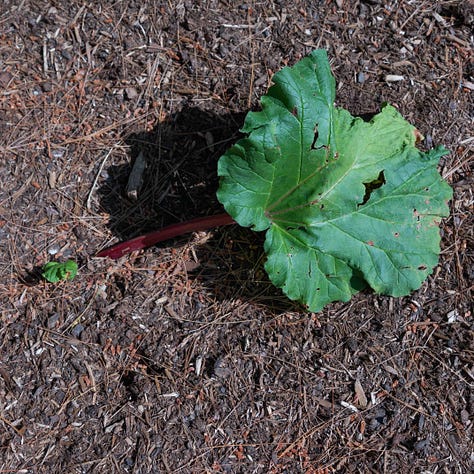
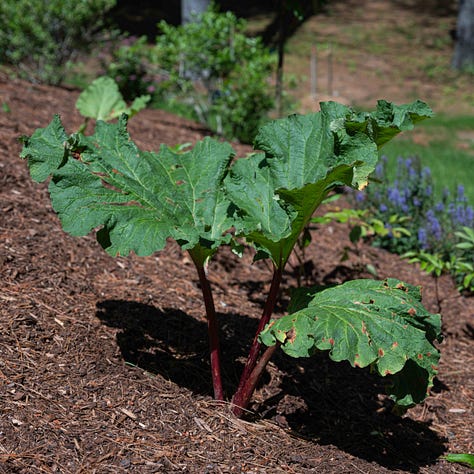
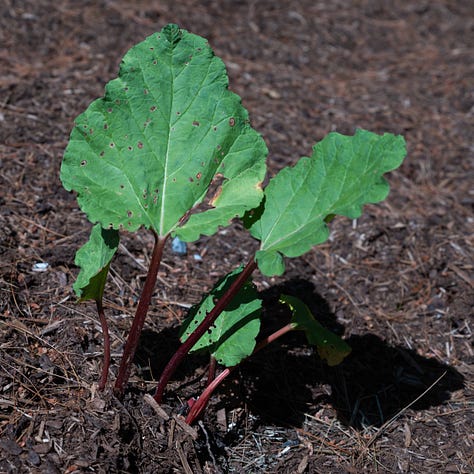
These cuttings only travelled twenty miles, but they are working hard to find their footing in this new soil. A bit like me.
It’s been 11 months since we sold our old house, and I’m definitely challenged by settling into a place where others have a say in what I’m doing in the garden…and whatever I do is on display.
I love being in community and having neighbors, but it’s an adjustment to manage this aspect of the experience.
And right now it’s hot, red hot, like these rhubarb stalks.5
The challenge: I’m not good in the heat. So I’m staying inside, looking at photographs of rhubarb and imagining how cool it is under their large leaves…
and finding other red things that I have photographed in the month of June in years past, and feeling a deep longing:

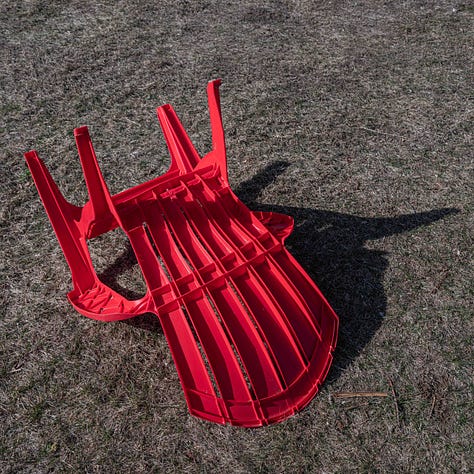
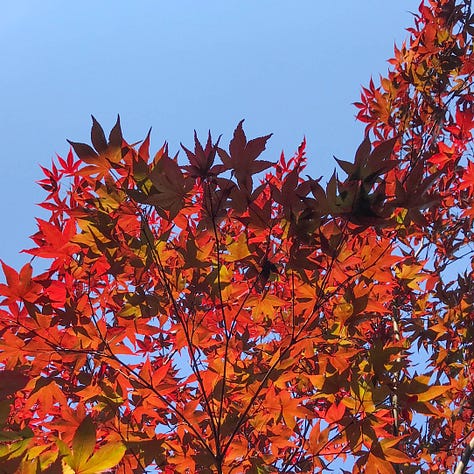

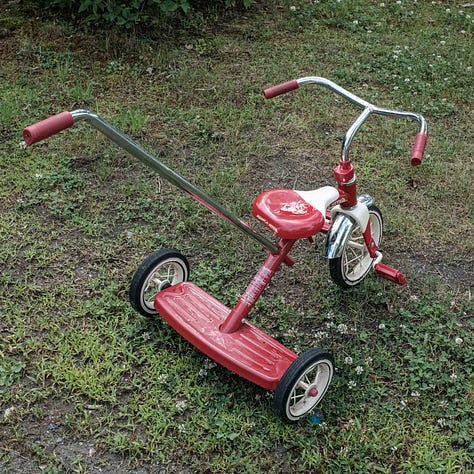
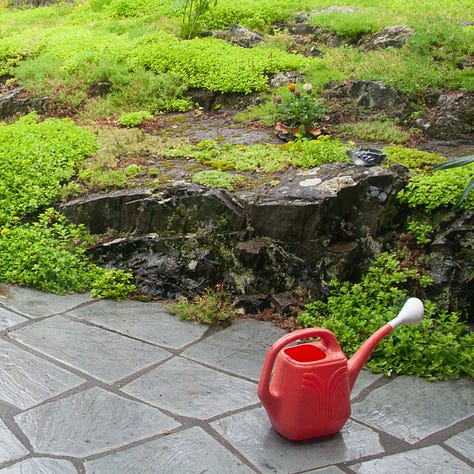
Nostalgia is a strange companion, but here it is, red…hot…and vibrant.
Like this longing I have to harvest rhubarb and asparagus at the end of an early summer day. I’d walk along the path on our ‘hillside’ garden, glass of red wine in hand, and gather these stalwart perennials for dinner.
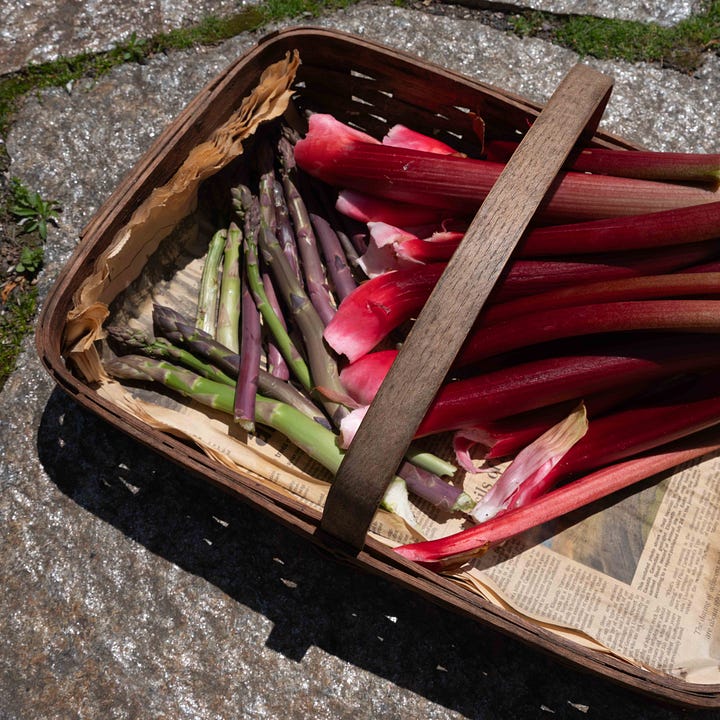

How to process these memories?
Compost them, I suppose, as I once composted the left-over rhubarb, and let them settle, nestled in with the mess of it all.6
And from that mess, new plants will grow, new photographs will be created, and I will, in time, move on as my struggling plants and I find strength in our new location and new life.
I can only hope that one day our new garden will feel as abundant as the one we left.
Meanwhile, I sew the spirit of my garden onto satin. Last week’s comfrey in conversation with this week’s rhubarb.7
And next week, Chives, also a necessary part of the conversation. Stay tuned!
With cheers and gratitude for you being you,
Lyn
Noticing all the reds/purples of this time of year, whether from an onion, a flower pod or strawberries.
Thank you, Wikipedia!
Rhubarb, Rheum Rhabarbarum: https://en.wikipedia.org/wiki/Rhubarb: Rha - from the region of the Black Sea, or the River Volga - Rha was the river’s ancient name. Barbarum - meaning foreign.
Rheum: https://en.wikipedia.org/wiki/Rheum_(plant): A genus of about 60 herbaceous perennial plants in the Polygonaceae family, which is informally known as the Knotweed/Smartweed/Buckwheat family. Who knew?
Polygonacaea: https://en.wikipedia.org/wiki/Polygonaceae
Originally used for medicinal purposes in Asia as far back as 1,800 years ago. Rhubarb was brought to Europe along the Silk Road. Landed in Aleppo and Smyrna in the 14th century.It was prized for medicinal purposes and very expensive.
John Bartram was the person with whom the ‘Founding Gardeners’ sustained extended conversations about agriculture and all things plant related during the 18th Century. To learn more about the gardening connections between George Washington, Benjamin Franklin, Thomas Jefferson, John Adams and others, read Andrea Wulf’s 2011 book Founding Gardeners: The Revolutionary Generation, Nature, and the Shaping of the American Nation
Also, cool facts: George Washington planted rhubarb seed in his botanical garden at Mount Vernon in 1788 and Thomas Jefferson first planted rhubarb at Monticello on his birthday in 1809 (April 13).
As I learned in Toby Hemenway’s Gaia’s Garden, rhubarb makes a fabulous addition to any permaculture food forest. If you want an inspiring and practical read, check out Gaia’s Garden - - it was my ‘bible’ for creating our integrated landscape.
It’s too hot to walk barefoot on the terrace, but thankfully our insulation is holding the cool in and the heat out.
Most of what we did not eat went as gifts to various neighbors…but sometimes stalks in the fridge became too dry to share…so we composted them.
I am a messy embroiderer.
My ‘policy’: If it’s not how I wanted it, move on to the next plant or section…over time, those ‘mistakes’ will just become part of the fabric of this living, breathing creation. Like most things, I prefer the ‘real deal,"‘ and I know that if I worried about making everything ‘just so,’ I’d never sew again.





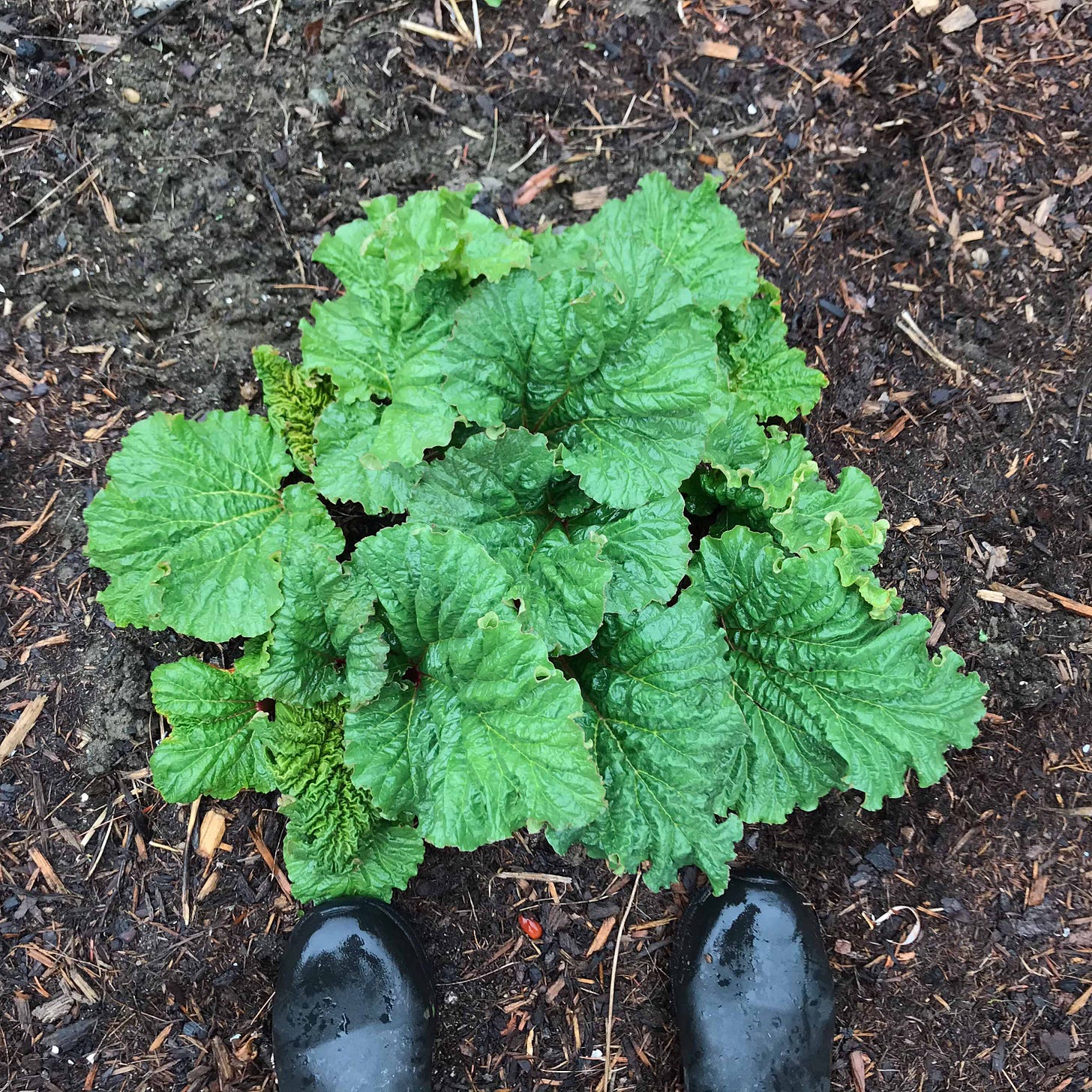




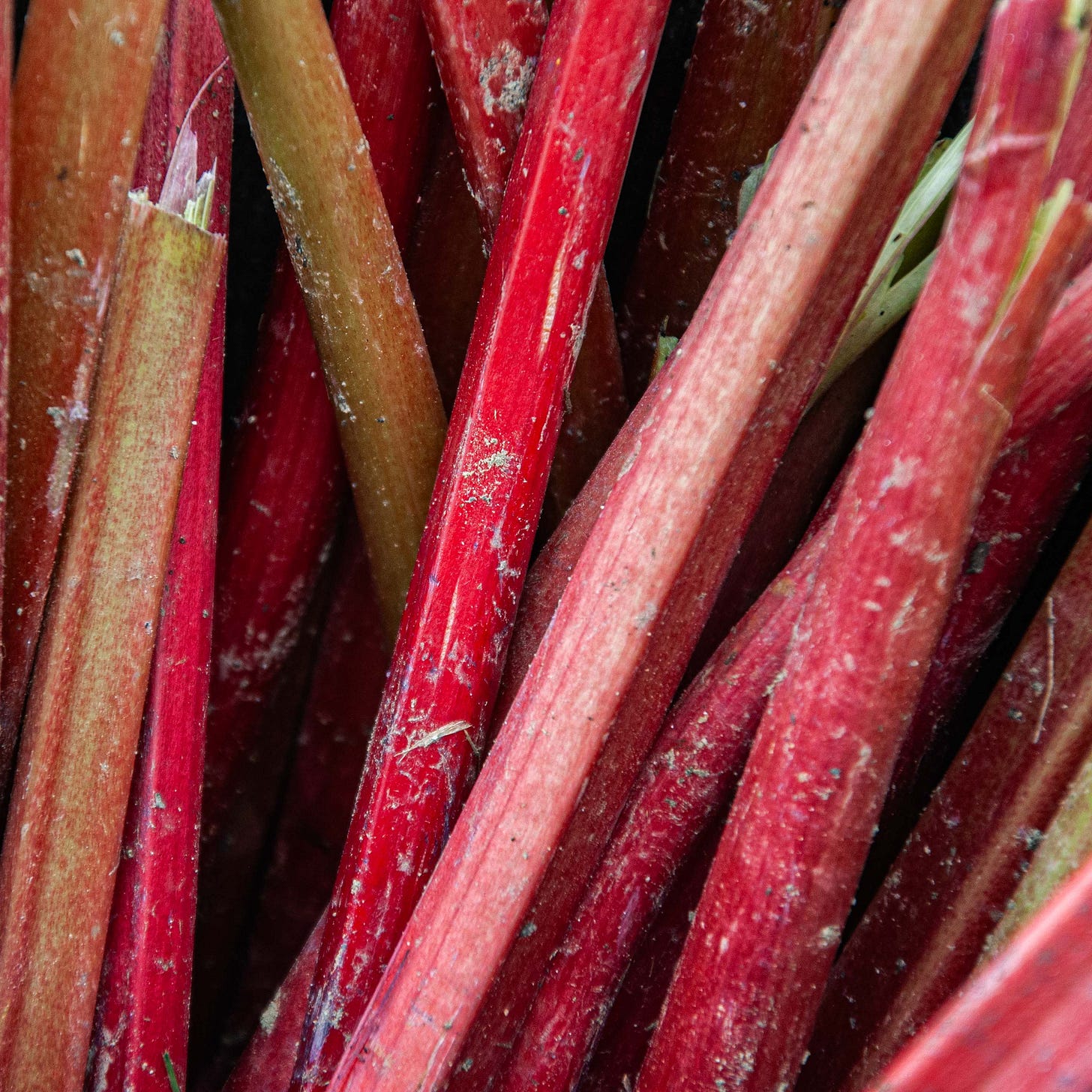
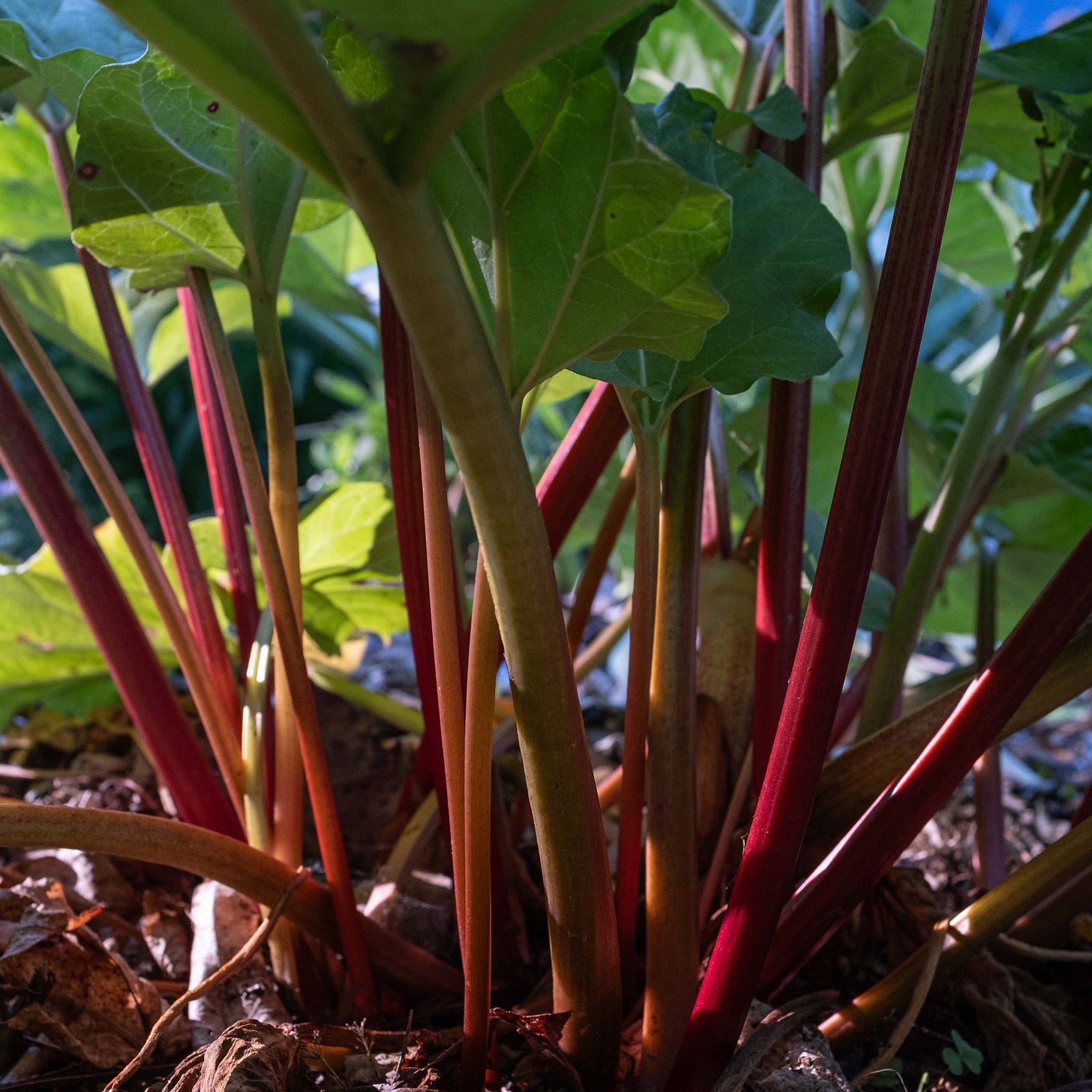
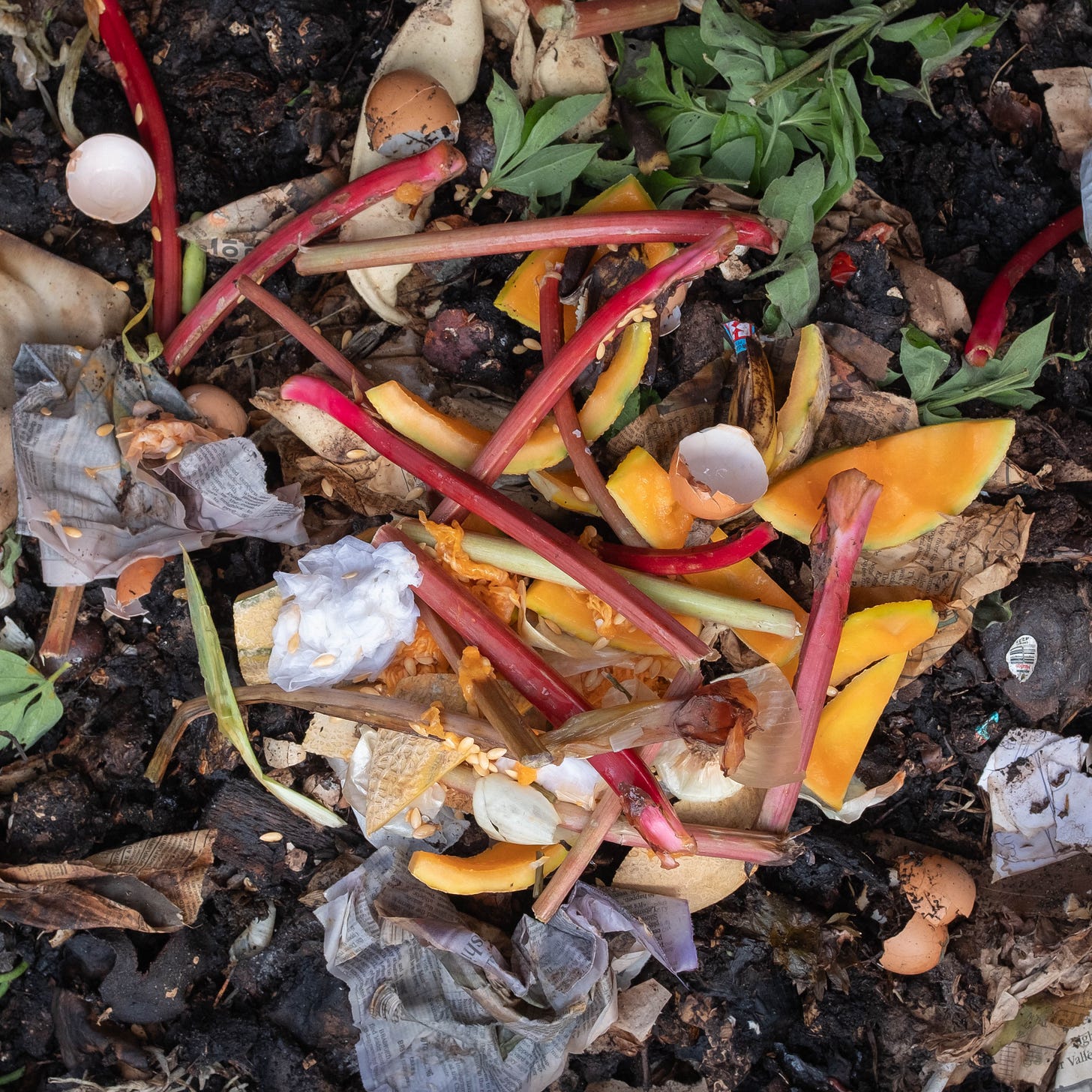


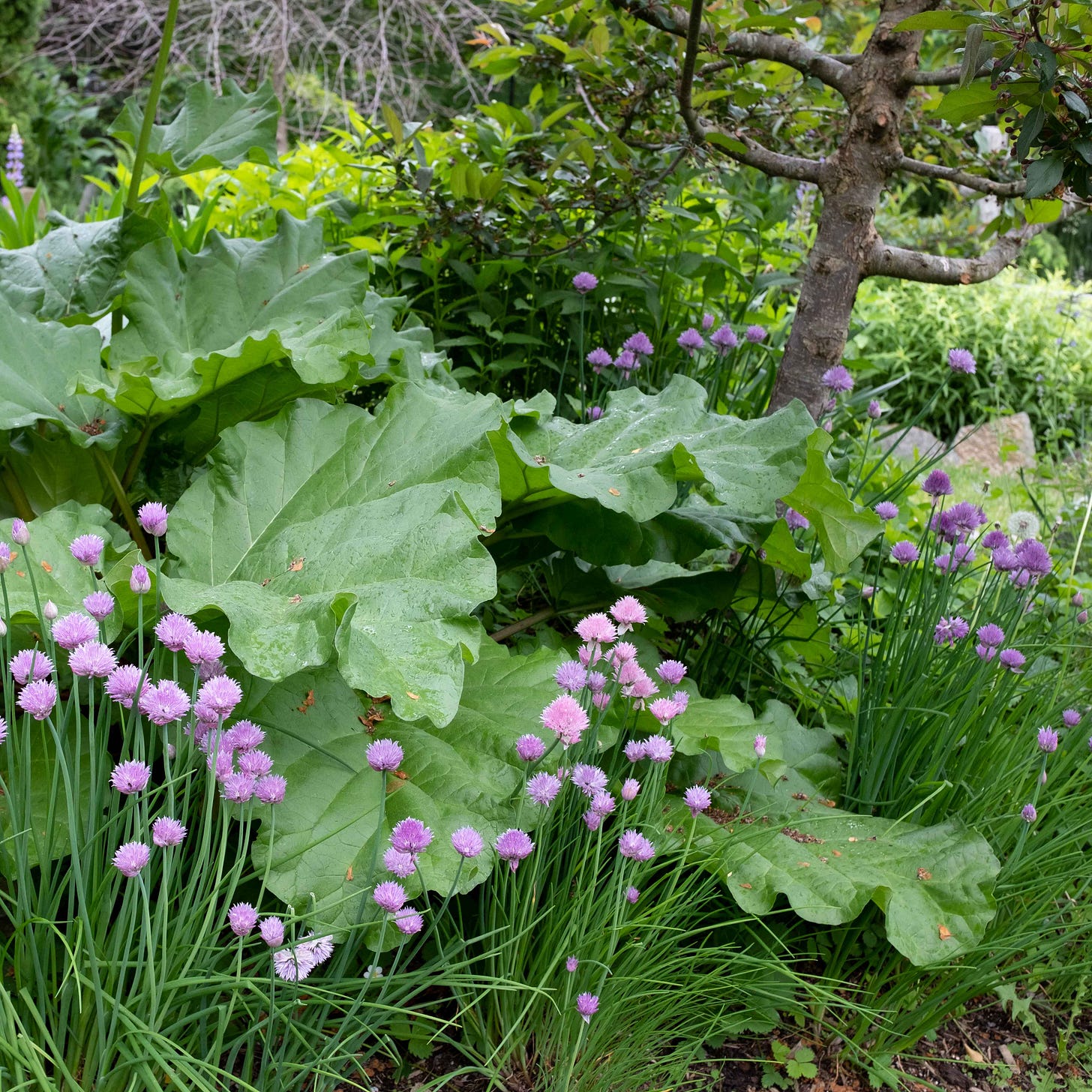
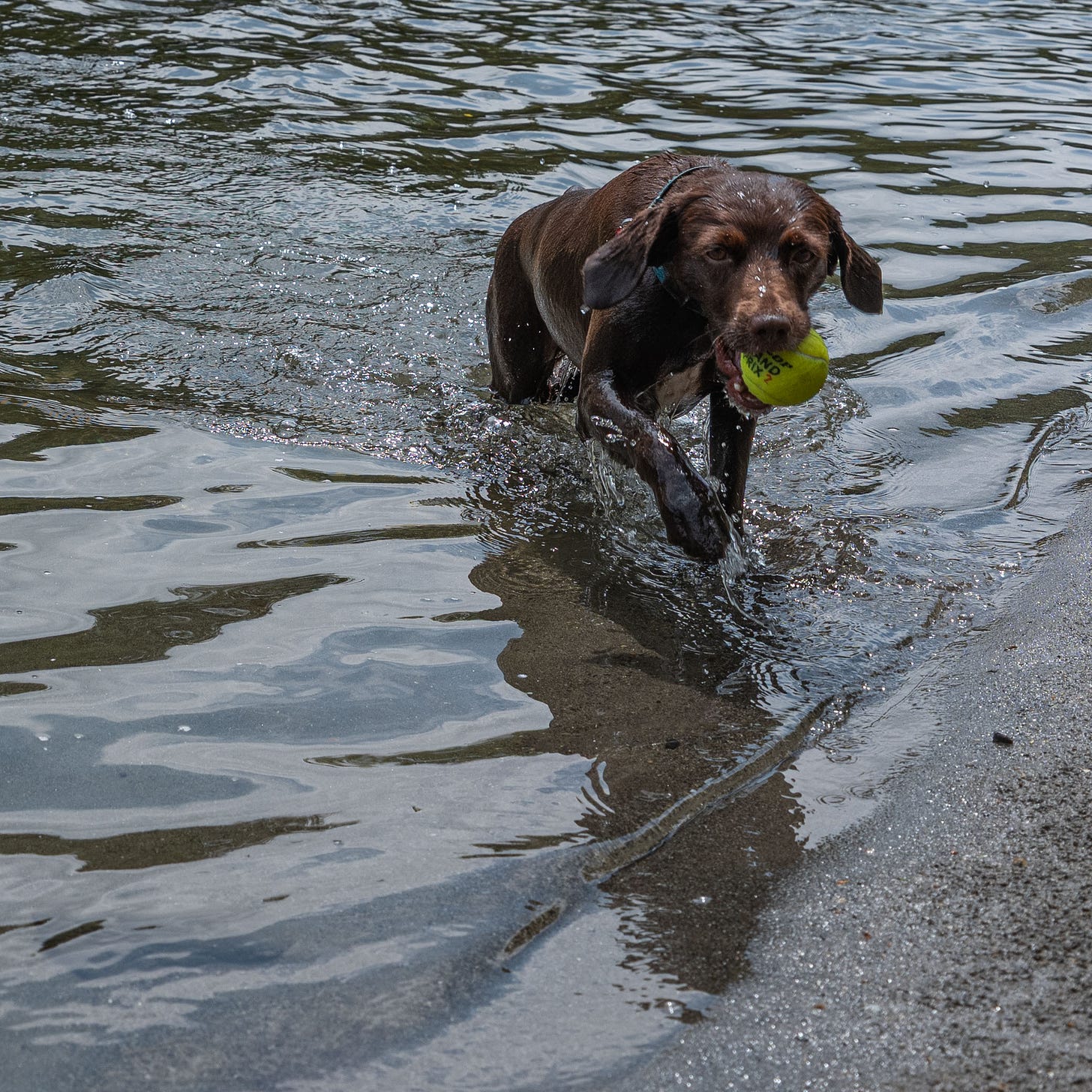



One of my neighbors has rhubarb growing in the rockery below his house. I look for signs of it in the new year, to say we are on our way to spring! Love the strength that this plant, as it shouts! 'I am here and I have things to say!!' Also love a dessert crepe made with rhubarb and vanilla custard or pudding. Oh so good! BTW - Nothing to say one cannot embroider a flower, butterfly, or even a spider over something that one is not happy with. Nature does this all of the time! :-)
I especially love those unfurling rhubarb flowers, and I think your embroidery captures the essence of your garden plants. Satin can't be the easiest substrate.